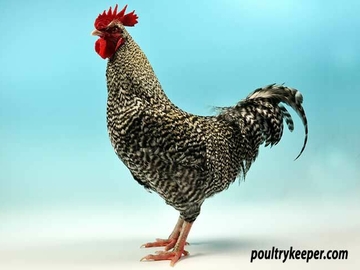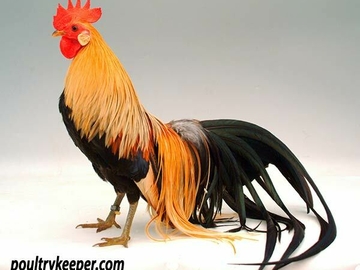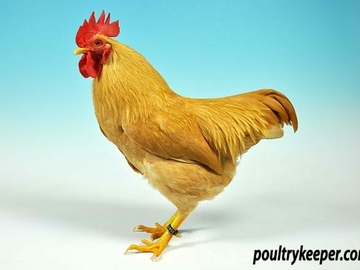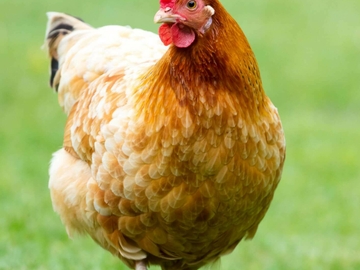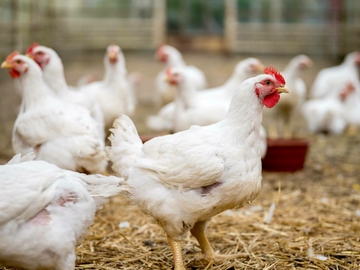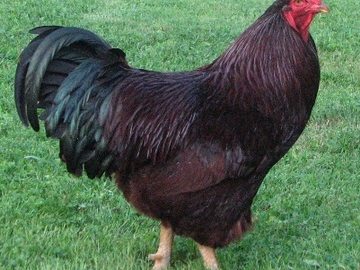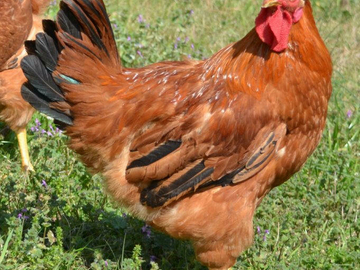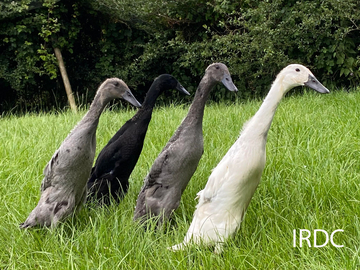
Poultry

Chicken Terminology
Chick: Baby chicken
Cockerel: Young male chicken (less than 1 year old)
Pullet: Young female chicken (less than 1 year old)
Cock: Adult male chicken
Hen: Adult female chicken
Rooster: Male chicken of any age
Bantam: Miniature chicken breeds
Layer: Breeds that are used for egg production
Broiler: Breeds that are used for meat production
Ornamental: Breeds used mainly as show animals or as pets
Chicken Interaction
Learn more about the basic anatomy, behaviour, and husbandry of backyard and commercial poultry.
Ornamental Chicken Breeds
These are chicken breeds that are often kept as pets in backyard operations or for showing. They will still produce eggs but at a much slower rate compared to the commercial layers. Similarly, they can be used as meat but do not grow as large or as fast as commercial broiler breeds.

Chicken Vitals
Chick Heart Rate: 350 – 450 beats per minute
Chicken (adult) Heart Rate: 250 – 300 beats per minute
Chicken Temperature (rectal): 40.6 – 43.0C
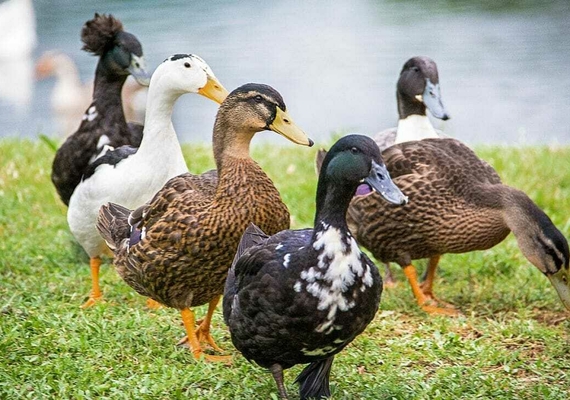
Duck Terminology
Drake: Male duck
Duck: A general term for the species, or it can refer to a female duck
Duckling: Baby duck
Egg tooth: A projection on the beak of a duckling used to crack the egg's shell
Pullet: A young female duck
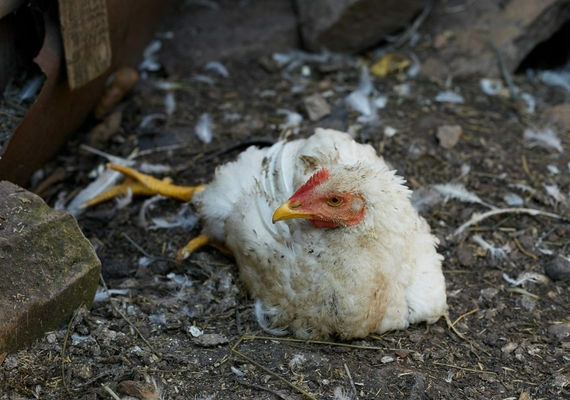
Mareks Disease
Mareks disease is caused by a virus in the subfamily of Alphaherpesvirinae. It will enter specific immune cells and cause the development of tumours in the muscle, skin and internal organs. This is a very common disease affecting a variety of species of birds including chickens, turkeys, and quail. We call this virus 'ubiquitous', meaning, it is found in almost all flocks of birds but doesn't always cause clinical disease. Clinically we usually see the formation of tumors on the skin. We may also notice weight loss, paralysis, and even death. Currently, there is no treatment for Mereks disease so prevention is very important. We can vaccinate our birds when they are young to protect against infection. It is important to use diagnostic tools such as the history and presenting information to distinguish this disease from Avian Leukosis which has no treatment or cure. Mareks disease usually affects very young birds while Avian Leukosis will affect older birds.

Bumblefoot
Bumblefoot, also known as Pododermatitis, is a bacterial infection that affects the feet of the bird. It is caused by a bacteria called Staphylococcus. This bacteria can also cause infection in other avian body parts and can even transmit to humans! Risk factors for this condition can include being heavy, male, eating a poor diet, overgrown nails, and prior wounds. Bumblefoot usually presents to us as birds that are limping and have swollen feet. If left untreated it can lead to necrosis of the affected tissue. This means that tissue will die and begin to fall off. We want to prevent the occurrence of this condition by maintaining a clean and dry environment for the birds to live in. Treatment of bumblefoot, and any disease, should be at the discretion of a veterinarian but may include antibiotics and bandaging of the infected area.
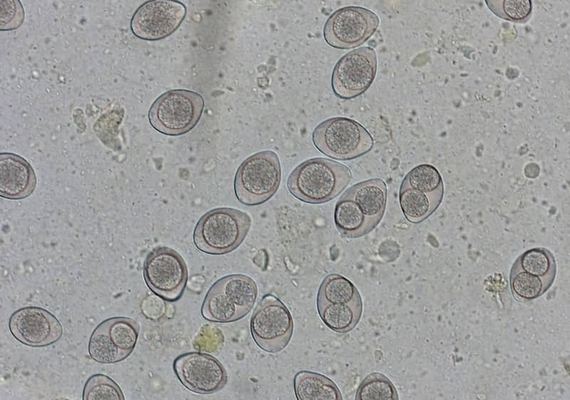
Coccidiosis
Coccidia are tiny single-celled protozoa that can infect the intestinal tract of many different animals including birds. They are commonly found in waterfowl and can be passed to captive birds through contact with feces. Infection with coccidia will limit the bird's ability to absorb the nutrients from their food in their intestines. This will result in clinical signs like bloody diarrhea, reduced production of eggs, and even death. It is very important to maintain a clean environment for owned birds to prevent infection. Additionally, limiting contact between backyard or commercial flocks and wild birds can decrease the risk of transmission. It is recommended that yearly fecal tests are performed to check for the presence of coccidia in the flock. Speak to your local veterinarians about other ways to prevent this disease!

Highly Pathogenic Avian Influenza
Highly pathogenic avian influenza (HPAI) is a global health concern for birds and humans. It is caused by an H5N1 influenza virus and can easily be transmitted between birds through contact with infected bodily fluids. Clinically, it can cause signs like sneezing, reduced coordination and eventually death. It can be carried asymptomatically (without causing disease) in waterfowl species. This makes waterfowl one of the primary modes of disease transmission. Currently, there is no cure for HPAI so the best defence we have is biosecurity! We want to ensure there is very little contact between wild birds and owned birds to reduce the risk of disease transmission.




